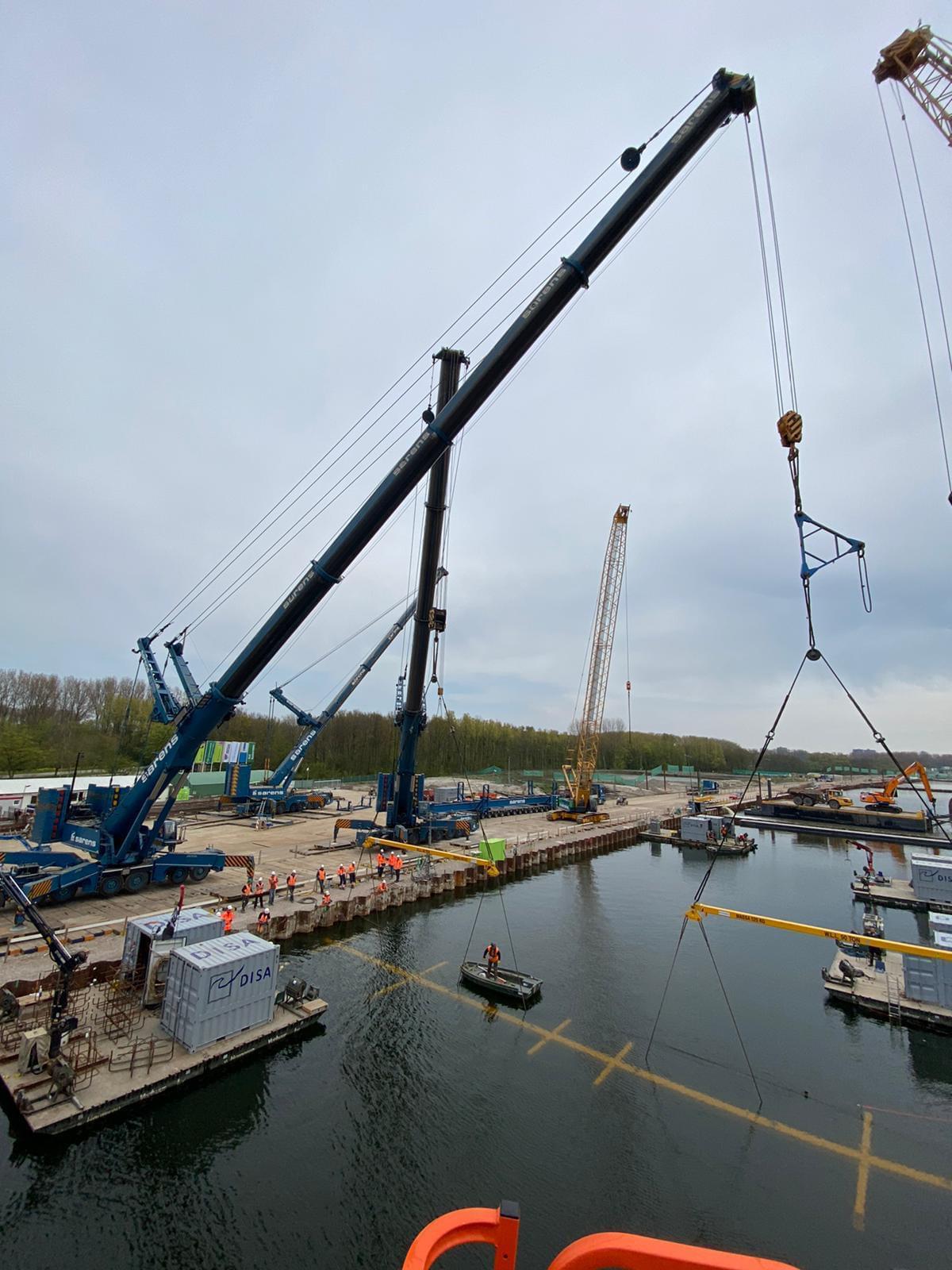
DE GROENE BOOG - ROTTEMERTUNNEL
Published on: 15/06/2021
GROENE BOOG LAYS FIRST HAND ON ROTTEMER TUNNEL
The construction of the new A16 is entering a new phase. Contractor combination De Groene Boog has laid the first hands on the new Rottemer tunnel in the Lage Bergse Bos. This is done in a special way: use is made of underwater concrete.
Construction of new A16
In 2019 Rijkswaterstaat started the construction of the new part of the A16. The new national highway must improve the accessibility and liveability of the north-eastern part of Rotterdam, Lansingerland and the surrounding region. The biggest project for Lansingerland is the construction of the new Rottemer tunnel. This tunnel will be constructed at a semi-underground level near the Lage Bergse Bos. This means that a new green area can be created on top of the tunnel, so that people and animals will experience as little inconvenience as possible from the new road.
Construction phases of Rottemer tunnel
The Rottemer tunnel will be constructed in 5 stages and according to a tight schedule. First steel sheet piles are placed to create the cofferdam. Next, foundation piles are drilled, which ensure that the tunnel will soon remain firmly in place. During the excavation of the cofferdam, water is added to prevent the bottom of the cofferdam from bursting open under the pressure of the groundwater. After carrying out this work, the project has now entered the next phase. The concrete floor of the tunnel is being poured and this is a special job, because it is done underwater.
Reinforced underwater concrete
The tunnel floor is made from reinforced underwater concrete. This is a type of concrete that can be poured underwater and will harden just like normal concrete. A special technique allows the concrete to be poured in the water without it being washed away. Divers are used for this work to ensure that the work is carried out accurately.
Divers
The divers for this project have had special training to carry out underwater work. These divers work in teams and take turns every three hours. At the moment, about 35 divers are active but this will increase to 90 by September.
Progress of the next phases
After the concrete has hardened, the construction pit is watertight and the water is pumped away. The underwater work must be completed by the end of the year. Then the concrete for the tunnel walls and roof will be poured on site in 25-metre sections. Space is reserved between the two tunnel tubes for the technical installations and the associated cabling.
The construction must be completed by 2022. The tunnel roof can then be decorated with trees, bushes and meadows for recreation.
Auteur : Yvette Gabler - RTV Lansingerland